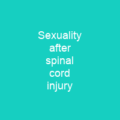The Spinal Cord: A Lifeline of the Nervous System
Imagine a delicate yet powerful lifeline connecting your brain to every part of your body – that’s what the spinal cord is! This long, thin structure, made up of nervous tissue, extends from the medulla oblongata in the brainstem all the way down to the lumbar region of the vertebral column. It’s like a superhighway for nerve signals, transmitting information from the brain to your muscles and organs, and coordinating reflexes that keep you alive and moving.
Structure and Function
The spinal cord is an ovoid-shaped structure with 31 segments, each containing sensory and motor nerve roots. These roots receive signals from your skin, muscles, and visceral organs (sensory) and send instructions to control movement (motor). The spinal cord itself has a butterfly-shaped grey matter core, which houses neuronal cell bodies, and white matter tracts that contain axons. This intricate structure allows for the transmission of nerve impulses, making it essential for both voluntary and involuntary actions.
Protection and Blood Supply
The spinal cord is protected by three layers of tissue called meninges: dura mater, arachnoid mater, and pia mater. These layers form a tough protective coating around the spinal cord, much like the armor of a knight. The spinal cord also has its own blood supply, provided by three longitudinal arteries and numerous side-approaching arteries from the spinal column. This ensures that it remains nourished and healthy.
Development and Growth
The formation of the spinal cord begins in the neural tube during fetal development. It undergoes several stages, including the neural plate, neural fold, neural tube, and finally, the spinal cord itself. During this process, Sonic hedgehog (SHH) plays a crucial role in its development, influencing the differentiation of neurons along the dorsal-ventral axis.
Ascending and Descending Tracts
The spinal cord is like a two-way street for nerve signals. Ascending tracts carry sensory information from your body to the brain, while descending tracts send motor commands from the brain to your muscles. The main ascending somatosensory pathways include the dorsal column-medial lemniscus pathway and the anterolateral system. These pathways are responsible for transmitting touch, pain, temperature, and proprioceptive information.
Reflexes and Central Pattern Generators
The spinal cord is not just a passive conduit; it’s also an active participant in controlling reflexes. Reflex arcs allow the spinal cord to independently control certain reflexes without involving the brain, making quick responses possible. Additionally, central pattern generators within the spinal cord are responsible for generating rhythmic movements like walking, breathing, and even swallowing.
Clinical Significance
The importance of the spinal cord cannot be overstated. Damage to it can result in a wide range of conditions, from mild loss of function to full-body paralysis. Spinal cord injuries are often caused by trauma or disease and can lead to hyperreflexia, hypertonia, muscle weakness, hypotonia, hyporeflexia, and muscle atrophy. Immediate immobilization is crucial when dealing with suspected spinal cord injuries.
Conclusion
The spinal cord is a marvel of nature’s engineering, serving as the backbone (pun intended) for our nervous system. Its intricate structure and vital functions underscore its importance in maintaining our health and well-being. Understanding its anatomy and function can help us appreciate the complexity of the human body and the need to protect this critical lifeline.

You want to know more about Spinal cord?
This page is based on the article Spinal cord published in Wikipedia (retrieved on February 6, 2025) and was automatically summarized using artificial intelligence.





